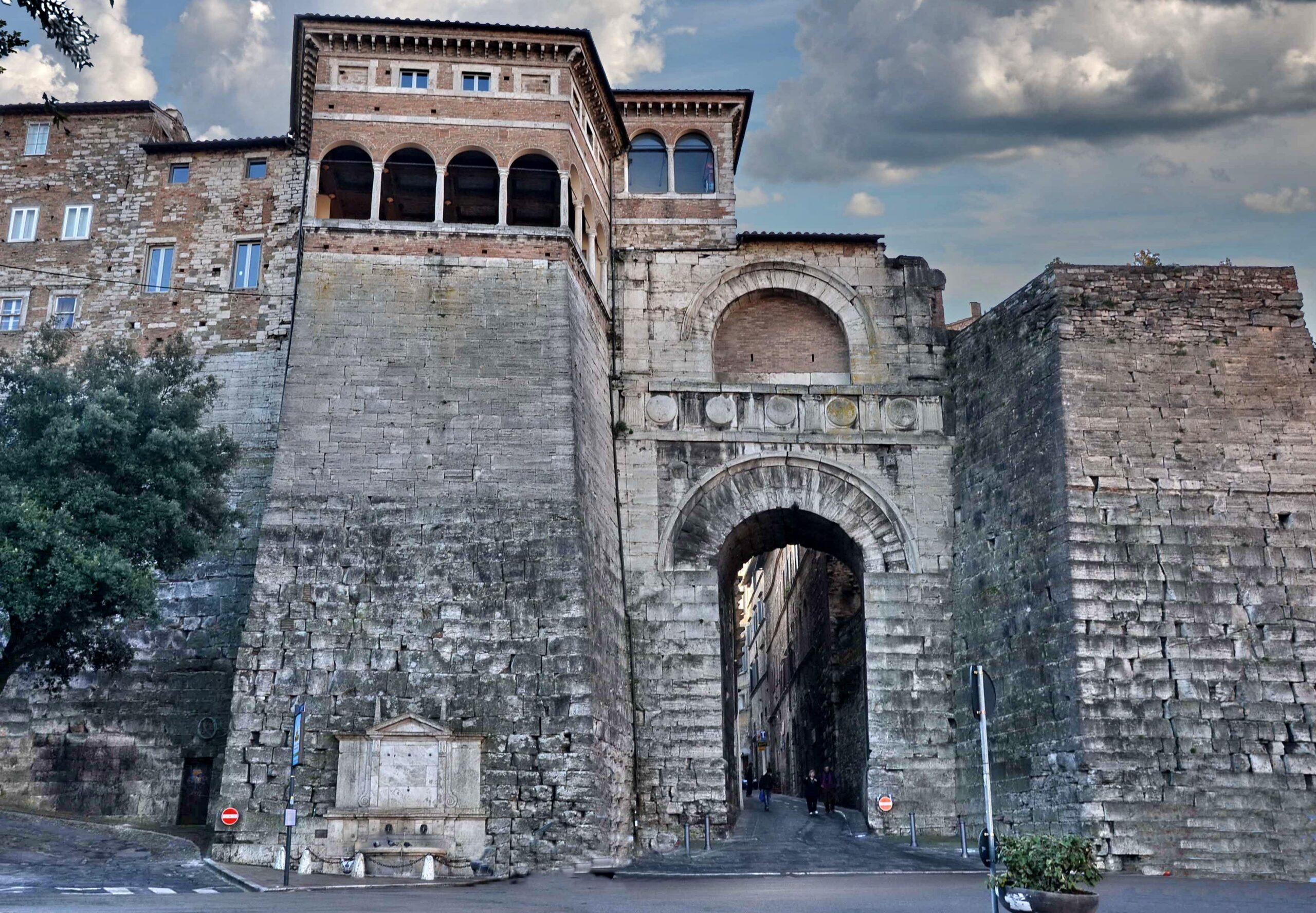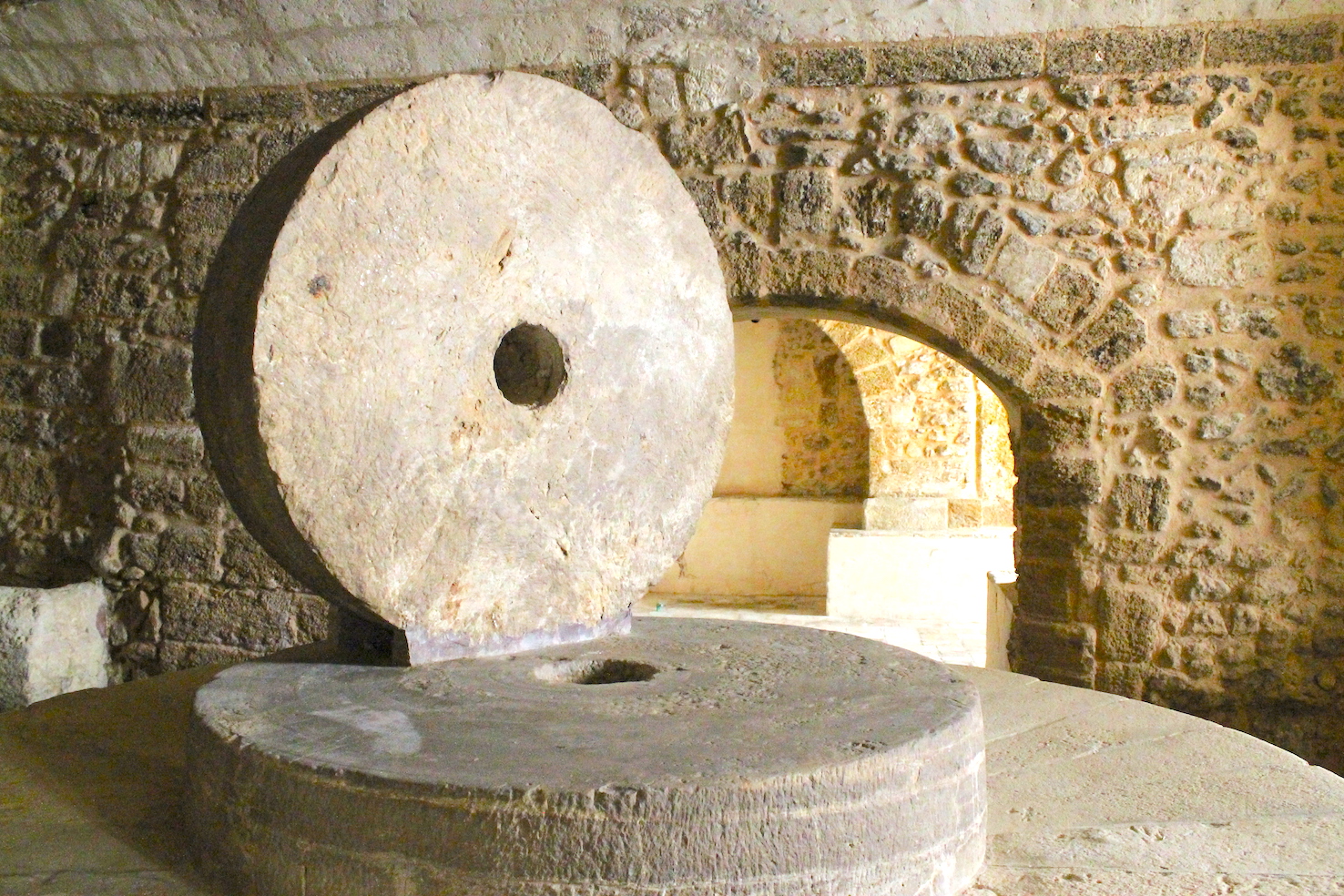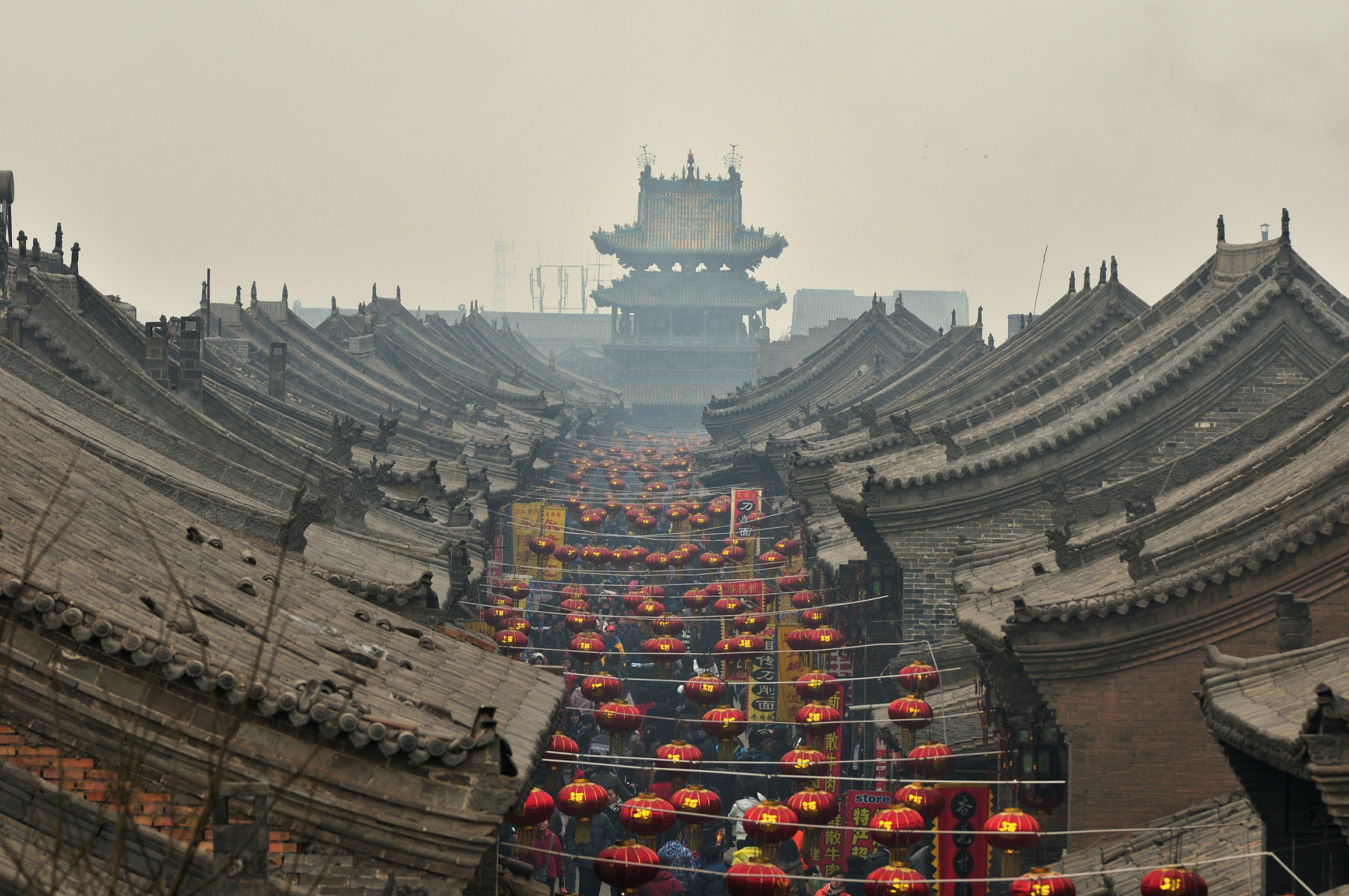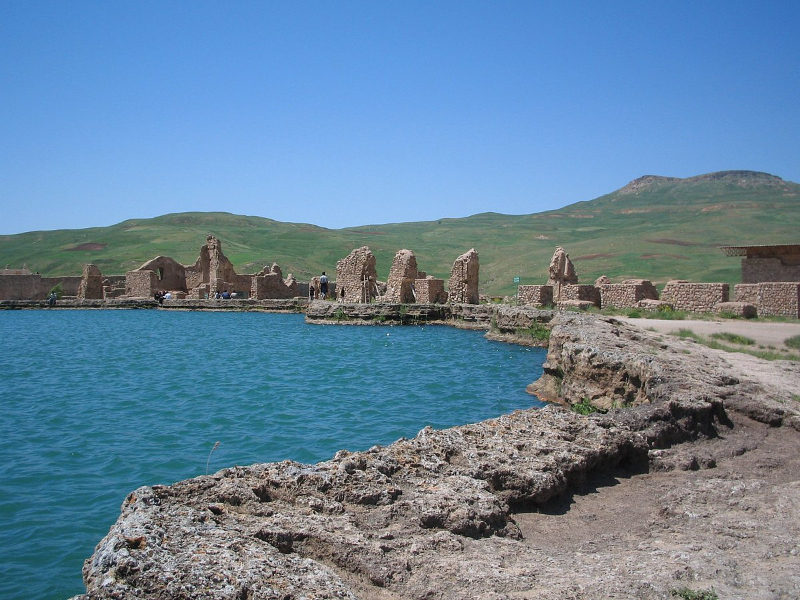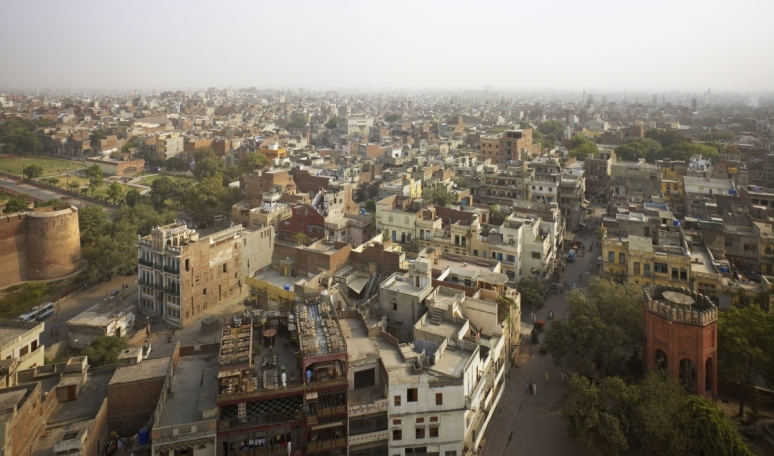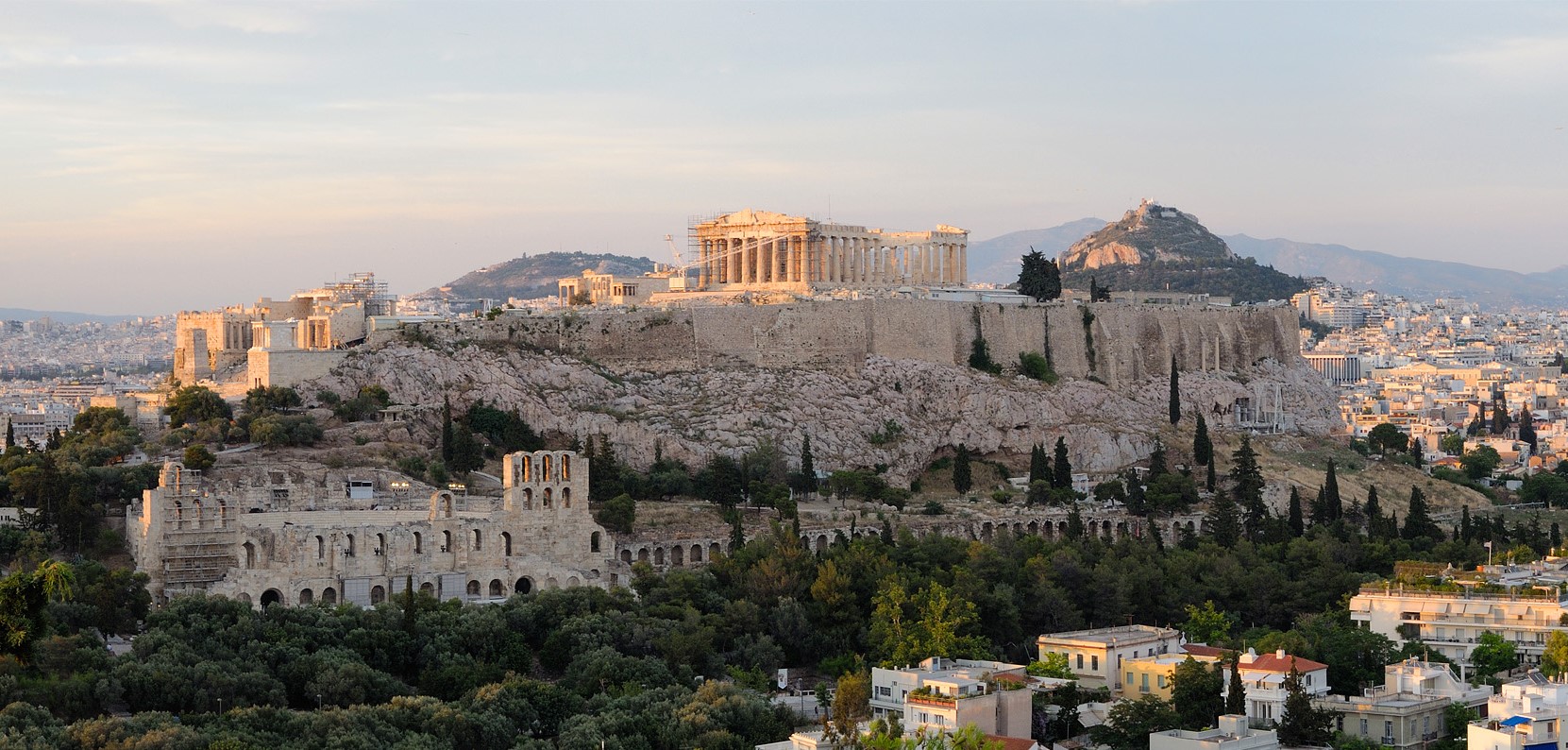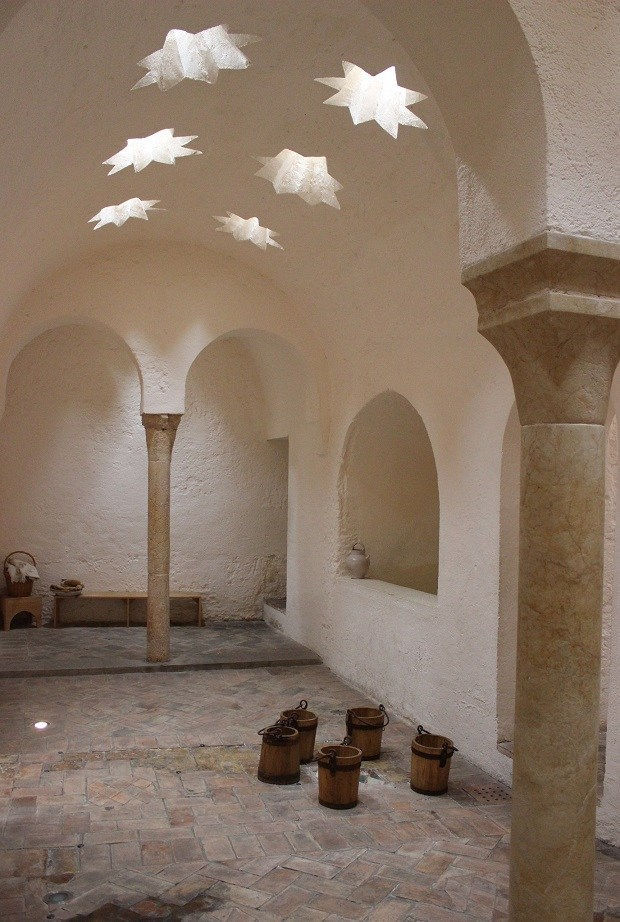Perhaps the most beautiful and majestic testimony of Perugia’s belonging to the ancient Etruscan civilization is the Etruscan Arch, also known as the Augustus Arch (or Tezia Gate, Northern Gate, Pulchra Gate, Via Vecchia Gate, etc.). Its origins can be traced back to the third century BC, built along the perimeter of the ancient Etruscan walls, was the most important gateway.
The material used for its realization is the typical one of the Etruscan constructions, that is the travertine, extracted from the quarry of S. Sabina. The assembly of the cubes was done without the aid of any mortar. The arch is placed in the middle of two towers of trapezoidal shape, built with the same techniques.
Certainly it is the most ancient of all the Perugian doors and it has not been subject to many modifications during the centuries, with the exception of a Renaissance loggia placed above the left tower and of a fountain built in the 17th century, at the foot of the same tower.
The name by which the work is also known, that is Augustus Arch, originates from an event that saw the Emperor Octavian Augustus in 40 BC. The latter, in fact, in an attempt to expel Lucius Anthony, the brother of Mark Anthony with whom Octavian was at war to gain power in Rome, devastated and burned Perugia, in one of the largest sieges of ancient times suffered by the city. Octavian, however, immediately took possession of it and immediately took care of the redevelopment, giving new social and architectural life to Perugia, naming it "Augusta Perusia", an inscription still visible today on the double turn of ashlars of the arch, whose recent restoration by the municipality of Perugia has recently brought to light a hitherto unknown red paint with which the writing was coloured, probably so that it could be read from afar.
On the arch, however, there is another inscription, on the frame immediately above the arch, which reads "Colonia Vibia", commissioned by the Roman emperor of Perugia origins, Gaius Vibius Trebonius Gallus (born in Monte Vibiano Vecchio, in the municipality of Marsciano, emperor from 251 to 253 AD), with which he named Perugia a Roman colony.
The Etruscan arch is situated in Piazza Fortebraccio.
